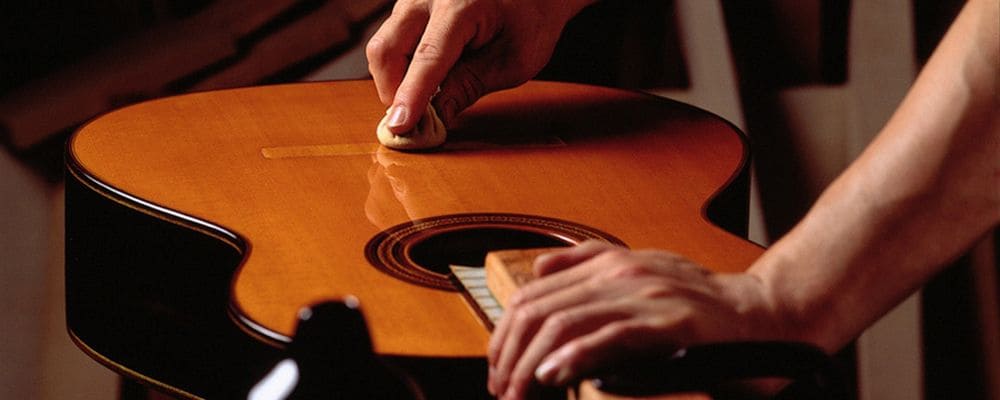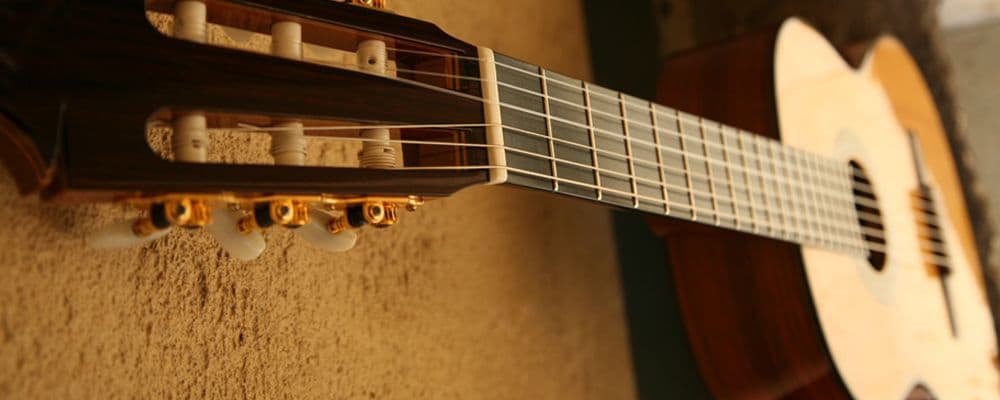Classical guitars are great for this
The Structure of the Classical Guitar
The soft, soothing sound of nylons strings
The soft, soothing sound of nylons strings
Acoustic guitars and electric guitars use steel strings, whereas classical guitars use nylon strings. Strings 1 through 3-the strings that produce the high pitched treble tones-are a single, transparent nylon string. Strings 4 through 6-those that produce low bass tones-are usually silver in color, but consist of around 200 individual strands of nylon wrapped with silver plated copper thread.
The major characteristic of nylon strings is the soft, pleasant sound that they are able to produce. Nylon strings have large vibrational amplitude when plucked, and require sufficient space between strings to ensure they do not hit the adjacent string. The neck of the guitar is wider than usual, to allow the player's fingers to press down a string without coming into contact with other strings during fast musical pieces.
The left hand thumb does not press the strings
The left hand thumb does not press the strings

The classical guitar has a wider neck, which changes the way the strings are pressed when compared to acoustic guitars and other designs. Compared to acoustic guitars, where the guitarist seemingly grasps the neck and presses down on strings with the thumb, the guitarist's thumb does not come into contact with the strings when playing a classical guitar. Instead, the thumb presses against the back of the neck to support the other fingers. All the remaining four fingers are used to press down the strings.
As for the width of the neck, a typical Yamaha classical guitar has a neck width of 52 mm, while that of a Yamaha acoustic guitar is 43 mm, demonstrating that the classical guitar neck is about 1 cm wider. The cross-section of an acoustic guitar neck is triangular, whereas that of a classical guitar is a semicircle.
The pitch rises along with the temperature
The pitch rises along with the temperature
As the temperature of a classical guitar rises, so does its pitch. Likewise, a decrease in temperature means a lower pitch. This is because the synthetic fibers in polymers such as nylon that are used in the strings of classical guitars tend to contract when the strings warm up under a certain amount of tension. This phenomenon is called the "Gough-Joule effect." This causes the strings to contract as the temperature of the guitar rises, increasing tension and causing the pitch to rise. This is especially the case with thicker nylon strings such as strings 2 and 3, while there is little change at all to strings 4, 5, and 6 (which are wound with metal).






